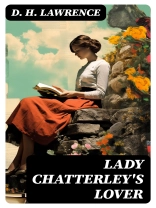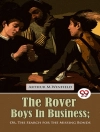D. H. Lawrence’s *Lady Chatterley’s Lover* intricately weaves themes of love, desire, and social class through its controversial narrative. Set against the backdrop of post-World War I England, the novel explores the passionate affair between Constance Reid, the constrained wife of Sir Clifford Chatterley, and the gamekeeper, Oliver Mellors. Lawrence’s prose is renowned for its lyrical quality, infused with vivid natural imagery and psychological depth, challenging the mores of his time. The book’s explicit content led to obscenity trials, positioning it as a pivotal work in literary discussions around sexual expression and individual freedom. D. H. Lawrence, an influential figure in modern literature, was deeply affected by the rigid societal norms of his upbringing in a working-class coal mining family. His experiences with love, class disparity, and the transformative power of nature played crucial roles in shaping his perspectives. This tumultuous backdrop fostered his desire to transcend conventional societal limitations, often exploring themes of passion and self-awareness in his works, with *Lady Chatterley’s Lover* standing as a quintessential example. This novel is a must-read for those interested in the intersections of love, class, and sexuality. *Lady Chatterley’s Lover* invites readers to engage with its audacious narrative and provocative themes, offering profound insights into the human condition. It remains a timeless exploration of the complexities of emotional and physical intimacy.
Despre autor
D. H. Lawrence, born David Herbert Lawrence on September 11, 1885, in Eastwood, Nottinghamshire, England, was a prolific English writer whose works spanned novels, short stories, poems, plays, essays, travel books, paintings, translations, and literary criticism. His reflections on the dehumanizing effects of modernity and industrialization expressed through intense, personal relationships in his fiction distinguish his literary contributions. Lawrence’s most controversial novel, ‘Lady Chatterley’s Lover’ (1928), is emblematic of his confrontational approach to narrative and societal norms related to sexuality, class, and nature. The explicit elements of the book led to a landmark obscenity trial in the UK, years after Lawrence’s death, which resulted in a significant shift towards freedom of expression in publishing. Lawrence’s literary style is characterized by a distinctive use of symbolism and a deep dive into the characters’ psychological and emotional landscapes, revealing his belief in the complexity of human nature. His other major works, such as ‘Sons and Lovers’ (1913), ‘The Rainbow’ (1915), and ‘Women in Love’ (1920), continue to be read and discussed for their exploration of human relationships, emotion, and instinct. D. H. Lawrence passed away in France on March 2, 1930, but his legacy endures through his contributions to modernist literature and his influence on subsequent generations of writers.












